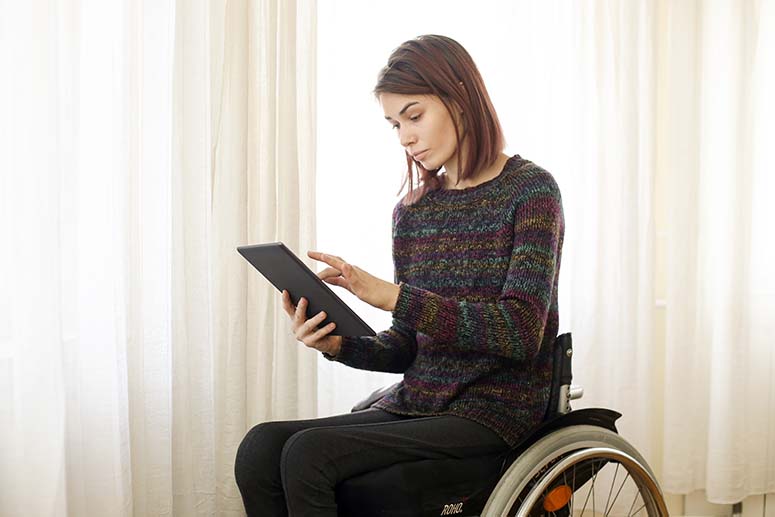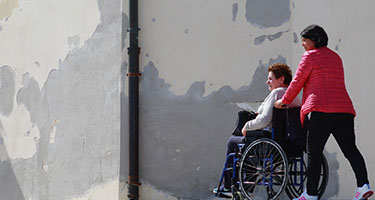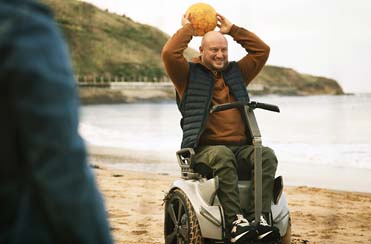There are many potential causes of autonomic dysreflexia – a serious medical condition that afflicts some people with a spinal cord injury. Learn more about common causes, treatment and symptoms.
Autonomic dysreflexia can occur in some people with a spinal cord injury, resulting in dire medical emergencies such as a stroke, seizure or cardiac arrest. It can happen when the body overreacts to many different types of stimuli.

Discovering the cause of autonomic dysreflexia
There are a wide variety of autonomic dysreflexia causes. They can range from a blocked catheter or sexual activity to an ingrown toenail. The commonality is that something new is happening below the level of your spinal cord injury that your body's autonomic system or "control centre" overreacts to by raising your blood pressure and lowering your heart rate.
Sometimes, the cause itself would warrant a trip to A&E in any case, for example broken bones, fractures, open wounds or other types of severe trauma to some part of your body below the level of injury. However, the root problem is often something minor. Let's explore three common areas of autonomic system stimuli that might be the culprit.
Bladder causes
Bladder problems are the most common cause of autonomic dysreflexia. Several potential bladder issues can cause this condition. If you think you are experiencing autonomic dysreflexia, you and your carer should check for bladder problems that can be quickly resolved.
For example, it may simply be an issue with your catheter. Examine your catheter bag to see if it may be at or near capacity. If that's not the problem, look for other issues with your catheter. Is it connected properly? Are there any kinks or is anything blocking urine flow?
Another common cause of autonomic dysreflexia is incomplete emptying of your bladder if you use an intermittent catheter. It's vital to stick to your optimum routine and ensure complete emptying to avoid the onset of this serious condition.
Other more serious bladder issues that may require a trip to the doctors include infections and bladder or kidney stones. Certain medical tests may also cause autonomic dysreflexia, so check with your doctor about the risks before proceeding.
Bowel problems
Other common autonomic dysreflexia causes fall under the bowel category. For instance, constipation, hard stools or digital stimulation done too roughly (or without enough lubricant) can cause this condition's onset. Haemorrhoids, gas, flatulence and bloating may also bring it on. Although it is possible to resolve these bowel issues at home, medical assistance may be required, especially if you continue to experience the symptoms of autonomic dysreflexia.
A bowel infection is another possibility that warrants a trip to the doctors or A&E
Skin-related issues
Many very minor skin-related issues can trigger your autonomic system to go into overdrive. They include:
· Tight-fitting clothing, belts, braces or shoes;
· Pinched or constricted genitalia;
· Hard or sharp object pressing against your body;
· Ingrown toenails;
· Insect bites;
· Sunburns or burns.
More serious skin issues, such as pressure sores, severe burns or lacerations, may not be remedied at home. If you suspect that these might be the root cause, visit your doctor or go to A&E.
Other causes of autonomic dysreflexia
The three categories mentioned above constitute the most common autonomic dysreflexia causes. Nevertheless, there is a long list of potential stimuli that warrant quick action. The one thing that all these autonomic system stimuli have in common is that they all constitute activities or events that would usually cause pain, discomfort, or in the case of sexual activity, intense sensations below your level of injury.
If the cause of your autonomic dysreflexia cannot be pinpointed and resolved at home, please treat it as a medical emergency and go to the nearest A&E.
References:









